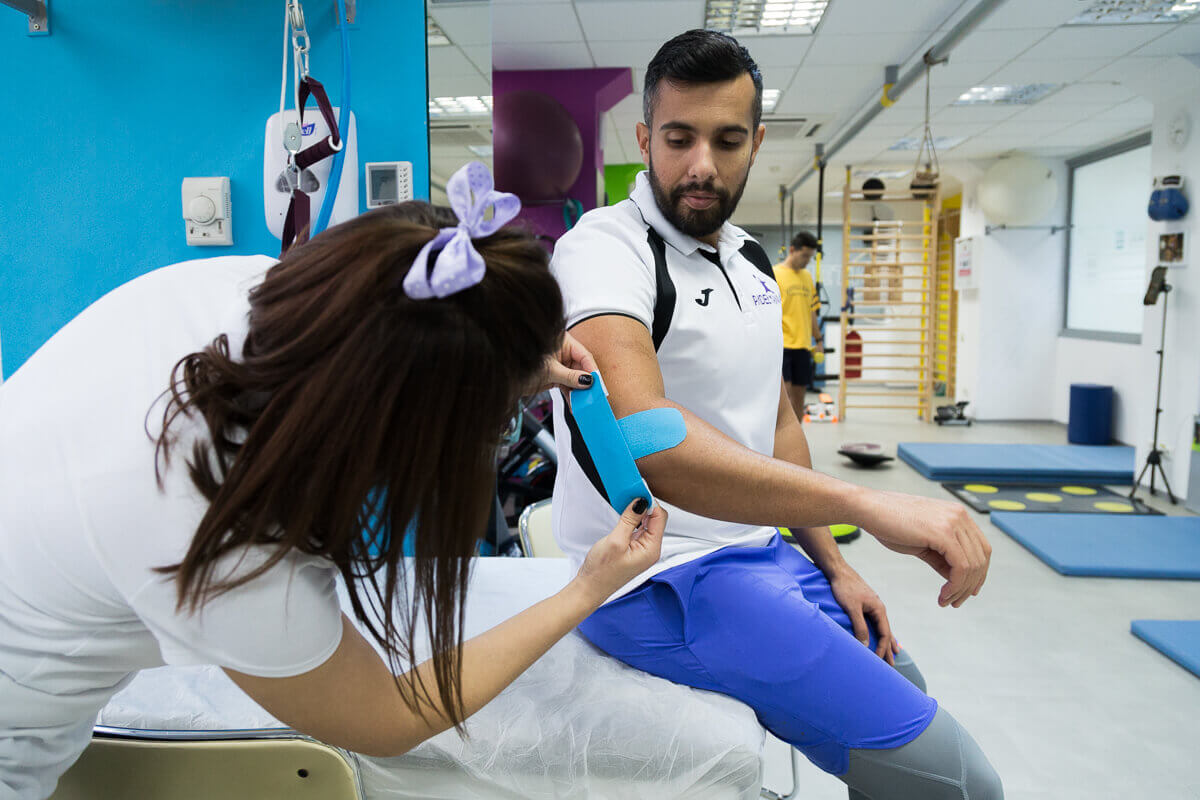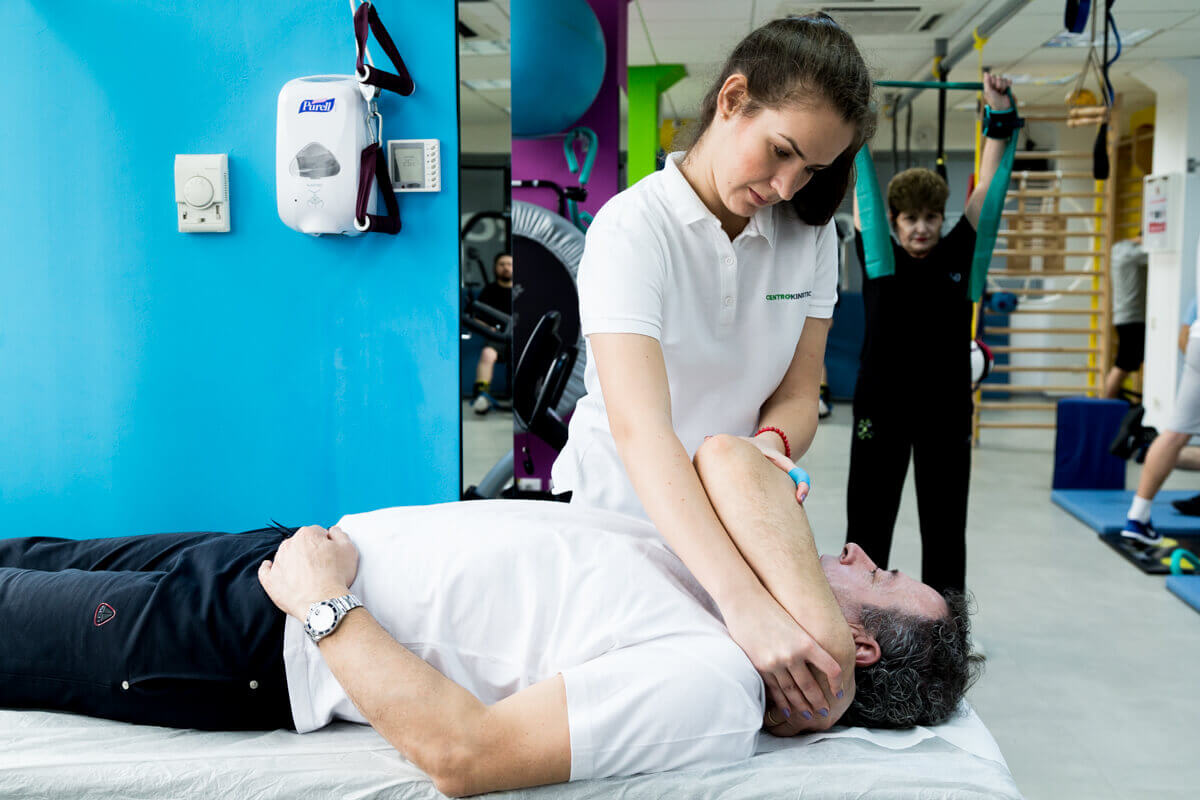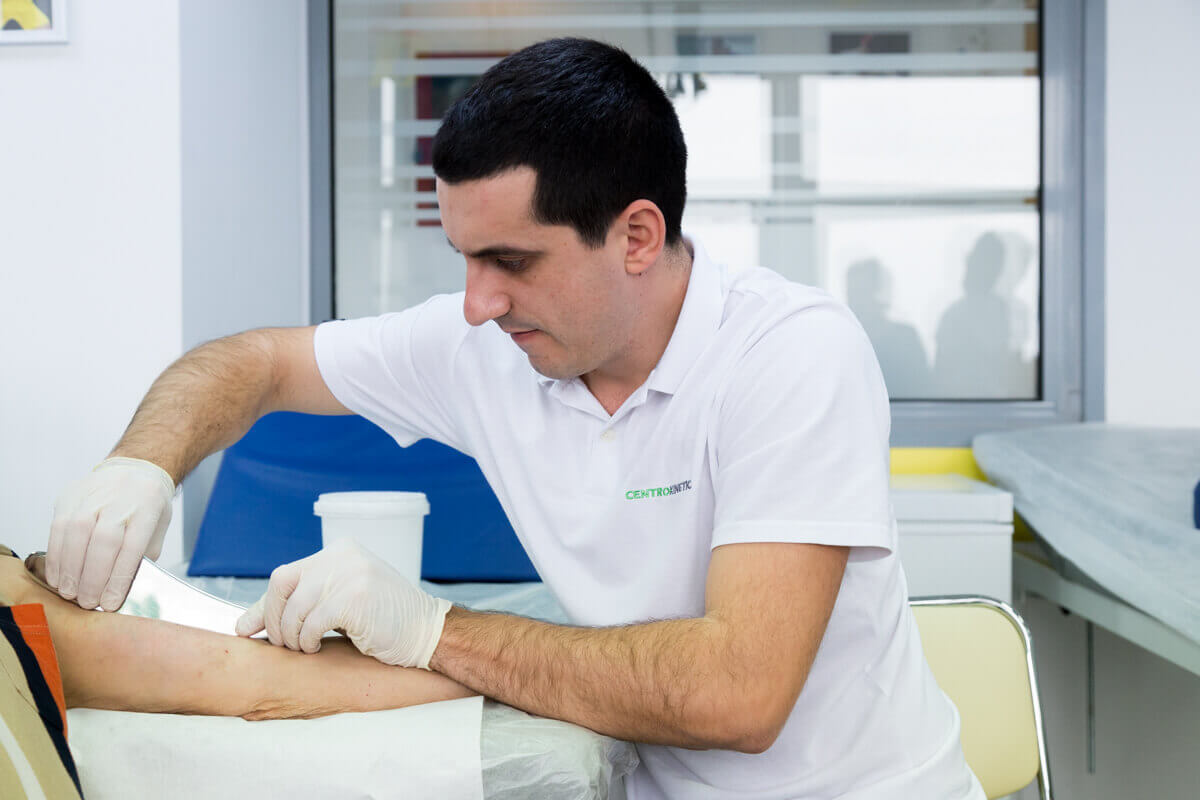Actualizat: 28-06-2022 / Publicat: 04-07-2017

Recovery protocol in lateral epicondylitis (tennis elbow)
Many tennis players develop pain in the lateral epicondyle of the elbow. This form of tendinitis is called lateral epicondylitis or "tennis elbow."
Lateral epicondylitis is an overuse lesion of the tendons of the hand extensors, which is inserted at the elbow. Repetitive grasping gestures can cause tissue damage to the muscle-tendon joint, causing inflammation of the tendon. Thus, there will be pain in the elbow, on the side of it.
Causes
- Muscle weakness
- overuse
- Grip movements during flexion/extension of the hand
- Inadequate equipment
- Paddles/tools that are too heavy or unbalanced
- Improper game technique
Treatment
Rest
You should temporarily stop the worsening of symptoms. A period of rest is very important to give the wound a healing time. You will only worsen the condition that you will continue the activity that causes you pain. Avoid lifting or carrying various objects.
Ice
Apply ice to the elbow 3 times, for 20-30 minutes or 20 minutes at the end of an activity that requires the arm. Protect your skin by applying a towel between the ice pack and the skin.
Stretching
Stretching will prevent stiffness, contributing to muscle flexibility and shrinking scar tissue.
Physical therapy
Forearm muscle strengthening exercises can begin as soon as the pain is gone. Muscle-strengthening will protect the injured tendon and prevent the recurrence of the injury.
Medication
Frequently, anti-inflammatory medication can help reduce pain. Cortisone will probably reduce the pain for a few months but will not change the recovery period required for the tendon to heal.
Orthosis
A counter-force orthosis represents an elastic band that is worn 1 or 2 cm below the elbow. This type of orthosis provides compression to the forearm muscles, thus reducing the force that the tendons transmit to the tendons. At first, the orthosis should be worn permanently, but as the pain decreases in intensity, it will be needed only during activities that generate stress on the injured limb.
Surgical treatment
Surgery is rarely necessary but is sometimes helpful in correcting recurrent or chronic tendonitis.
Rehabilitation protocol
Stretching and strengthening muscles that attach to the injured tendon will help in the healing process. Stretching and exercise should be avoided if it causes pain. The following exercises can be performed every 2 days until the symptoms subside. Continue to perform the exercises as a form of warm-up before playing tennis, golf, or other sports that involve grabbing activities.
Strengthening the hand with resistance exercises
With a band wrapped around the fist and the opposite side secured under the foot, orient your palm down and bend your fist and hand up as far as you can. Repeat the movement 10-20 times, 2 times a day. This exercise can also be done with a dumbbell.
Flexion of the hand with resistance band
With a band wrapped around the fist and the opposite side secured under the foot, orient your palm up and bend your fist and hand up as much as you can. Repeat the movement 10-20 times, 2 times a day. This exercise can also be done with a dumbbell.
Strengthened pronation/supination of the forearm
With a dumbbell in the hand and the forearm on the thigh, perform light pronation/supination movements of the forearm. Make sure that only the forearm moves and the elbow is fixed. Repeat 10-20 times, 2 times a day.
Stretching the hand extensors
With the elbow outstretched, the fist and palm should be facing up. Grasp your hand at your fingers and stretch your fist back until you feel a stretch in your forearm. Hold this position for 15 seconds, repeat 3-5 times, 2-3 times a day.
Stretching the flexors of the fist
With the elbow outstretched, the fist and palm should be facing down. Press on the palm until you feel a stretch in the forearm muscles. Hold this position for 15 seconds, repeat 3-5 times, 2-3 times a day.
![]()








































































































































